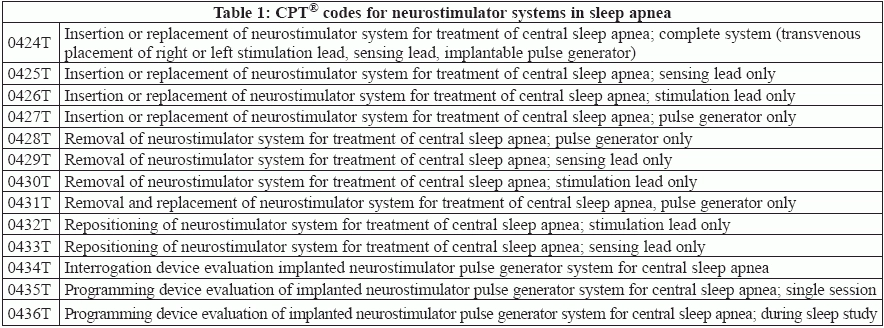Don't Sleep on New Moderate Sedation Codes
Remember 99143-99145? You can forget them.
Another year, another set of new, revised and deleted codes from CPT®.
For pain management practices, there are several new and revised codes in CPT® 2017 that might affect how you code this year.
Important: If your PM physician uses moderate sedation, make sure you pay particular attention to how you code for the service this year. Check out this CPT® 2017 primer for more information on the codes that could impact your practice.
CPT® Adds Trio of Sedation Codes
Your physician may perform some neurological diagnostic or therapeutic procedures with moderate sedation. It is now the right time to gear up for changes in codes for reporting moderate sedation. The AMA has deleted some of the widely used moderate sedation codes. You will now have new options in 2017.
Deleted codes: The following moderate sedation codes were deleted effective Jan. 1, 2017:
Added codes: In 2017, you will have these new codes to submit for moderate sedation, if encounter specifics allow for it:
What’s the difference? When you look at the existing and new codes, you will notice that the new code descriptors are the same as those for codes 99143-99145, with the key update being the addition of the phrase “other than those services described by codes 00100-01999.” “The intent is to distinguish anesthesia services from those provided by another health care professional, often the provider of the interventional service,” says Gregory Przybylski, MD, director of neurosurgery at the New Jersey Neuroscience Institute, JFK Medical Center in Edison.
CMS update: The Centers for Medicare and Medicaid Services (CMS) issued a final rule that updates payment policies and payment rates for services furnished under the Medicare Physician Fee Schedule (MPFS) on or after January 1, 2017.
According to this rule, “CMS is finalizing values for the new CPT® moderate sedation codes and adopting a uniform methodology for valuation of the procedural codes that currently include moderate sedation as an inherent part of the procedure.”
You can read more about this update on: https://www.cms.gov/Newsroom/MediaReleaseDatabase/Fact-sheets/2016-Fact-sheets-items/2016-11-02.html.
CMS Still Looking at Telehealth
CMS has also released a final update on payment rates and policies. According to this rule, “CMS is also finalizing payment policies related to the use of a new place of service code specifically designed to report services furnished via telehealth.”
You can read more about this final rule at: https://www.cms.gov/Newsroom/MediaReleaseDatabase/Fact-sheets/2016-Fact-sheets-items/2016-11-02.html.
Keep Using Cat III Codes for Neurostimulator Services
The Category III codes for phrenic nerve stimulation were accepted at the May 2015 CPT® Editorial Panel meeting for the 2017 CPT® production cycle. However, due to the Category III code early release policy, these codes went in effect on January1, 2016, following the six-month implementation period which began on July 1, 2015.
In 2017, you will continue to report the same phrenic nerve stimulation codes. “As with other Category III codes, such procedures are generally not widely disseminated, there is limited publication regarding efficacy, and/or the procedure uses technology that is not FDA-approved for the indication,” Przybylski says. “CPT® provides a time-limited period for conversion to a Category I code if all of the conditions for Category I code designation are met.”
Table 1 lists the CPT® codes you will have for neurostimulator systems that your physician may insert for central sleep apnea. Note that there are discrete codes for insertion or replacement and removal of the pulse generator and/or the sensing leads. In addition, you have codes for repositioning and programing of the neurostimulator device.
Find out more: For more on the changes in 2017, you can check https://www.cms.gov/Medicare/Medicare-Fee-for-Service-Payment/PhysicianFeeSched/PFS-Federal-Regulation-Notices-Items/CMS-1654-P.html.


